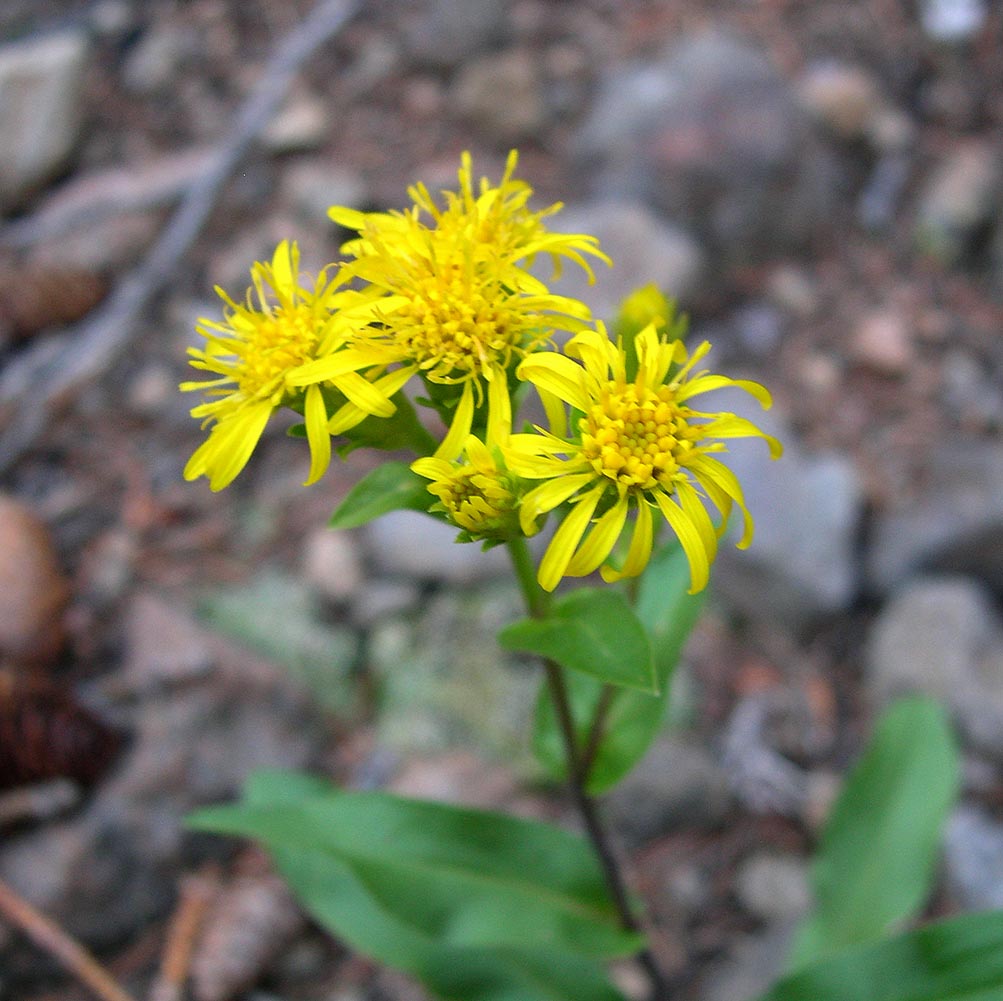Oreochrysum
|
Family: Asteraceae |
Perennials 15-60(-100) cm; rhizomes long, slender, scale-leaved, thickening, becoming woody. Stems erect, usually simple, minutely puberulous or hirtellous, stipitate-glandular. Leaves basal and cauline (basal and proximal cauline persistent); alternate; petiolate to subpetiolate; basal and proximal cauline blades 1-nerved, spatulate-oblanceolate, mid and distal elliptic to broadly ovate-lanceolate or oblanceolate, margins entire (apices acute to obtuse or rounded), minutely, short-stipitate-glandular or gland-dotted, viscid. Heads radiate, in distinctly flat-topped, tightly corymbiform arrays. Involucres campanulate to hemispheric, 10-11 × 6-8 mm. Phyllaries 15-24 in 3-4 series, mostly appressed, 1-nerved (rarely with lateral pair; convex proximally, flat beyond), outer lanceolate to ovate, inner broadly lanceolate-oblong, strongly unequal to subequal, herbaceous, slender (apices green-tipped and erect to reflexing), glabrous or hirtellous, minutely stipitate-glandular, non-resinous. Receptacles flat, pitted , epaleate. Ray florets 12-20, pistillate, fertile; corollas yellow. Disc florets 25-37, bisexual, fertile; corollas yellow, tubes shorter than narrowly tubular-funnelform throats, lobes 5, erect to spreading, triangular; style-branch appendages linear. Cypselae fusiform, plump but distinctly compressed, nerves 12-16 (whitish, raised), glabrous; pappi persistent, of 40-60, equal, barbellate, apically attenuate bristles in 2(-3) series. x = 9. Oreochrysum often has been treated as Solidago parryi; J. C. Semple et al. (1999) placed Oreochrysum at subgeneric rank within Solidago. Oreochrysum is separated from Solidago on the basis of its stipitate-glandular vestiture, large heads in strongly corymbiform arrays, herba-ceous phyllaries, prominent rays, narrow disc corollas with relatively short lobes, linear-lanceolate style-branch appendages, and large cypselae. It has no apparent close relatives within Solidago.
|

